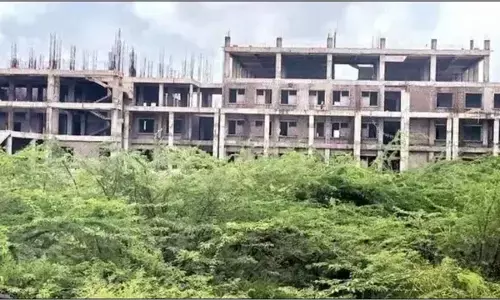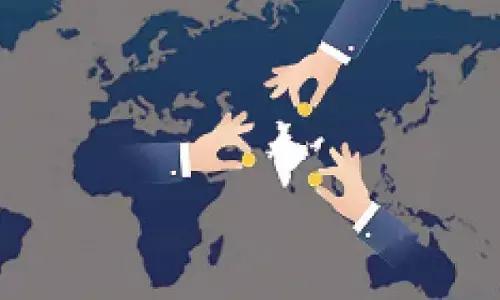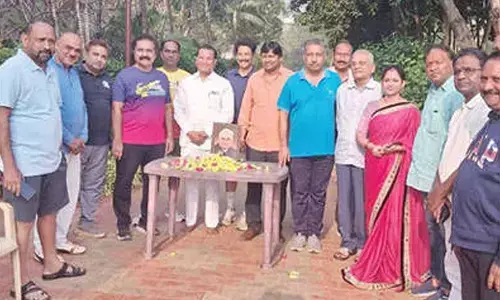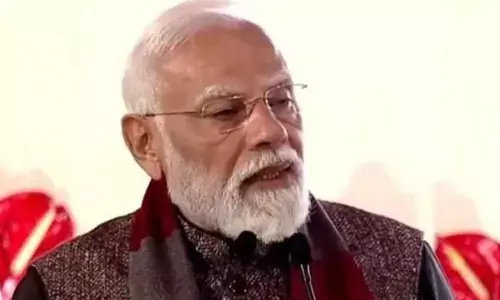Do we allow Adivasis to survive?

Article 21 of our Constitution says every person, (including forest dwelling Adivasis), has a guaranteed right to life and if this right is breached, he has a right to constitutional remedy under Article 32 to approach the Supreme Court or any High Court under Article 226.
Article 21 of our Constitution says every person, (including forest dwelling Adivasis), has a guaranteed right to life and if this right is breached, he has a right to constitutional remedy under Article 32 to approach the Supreme Court or any High Court under Article 226.
Most of the tribals do not know their rights and protection process and it is almost impossible for them to travel up to capital cities to seek remedy for deprivation.
The Supreme Court's direction on February 13 this year to evict around 11 lakh Scheduled Tribe or other traditional forest dwellers across 16 States is shocking.
Are they encroachers, should they be sent out forcibly, where do they go? One pen stroke in decision making by executive or judiciary in Delhi will strike very hard at millions of lives. If the decision is from the apex court, the Adivasis will have nowhere to go, as all options get closed.
Fortunately, the Supreme Court on February 28, stayed its controversial February 13 order of eviction of forest dwellers whose claims for forest land rights have been rejected under the Forest Rights Act (FRA) of 2006.
The Bench led by Justice Arun Mishra warned "the mighty and the undeserving" encroachers of forest lands would be shown no mercy. Who will decide the mighty and undeserved, on what basis? The process is not free from corruption at every stage tilting the scales in many cases.
Whether due process was followed by Gram Sabhas and States' authorities under the Forest Rights Act before the claims for forest rights of forest-dwelling Scheduled Tribes (FDST) and other traditional forest dwellers (OTFD) were finally rejected?
The ruling party asked the people to file number of petitions before Supreme Court seeking reversal of the order and advised its State governments also to do so. The Centre asked the States to file proper affidavits on the procedure followed in the verification of forest rights claims before any such eviction.
The apex court asked States to explain in four months and to respond to allegations that there was a high rate of rejection of claims, non-communication of rejection orders, unrealistic timelines in deciding claims, irregular holding of State Level Monitoring Committee meetings, lack of support from the district administrations concerned in providing revenue or forest maps, rejection of claims despite incomplete or insufficient evidence, etc.
It is not known whether tribals and OTFDs were ousted from forest lands on the basis of sketchy, incomplete information and data.
Government's deep slumber
Justice Arun Mishra asked the Centre if it was in a "slumber for the past three years". The February 13 order of the Supreme Court was only a follow-up of its order on January 29, 2016, directing the eviction of 'encroachers'.
The court asked why there were no mechanism in place in the States or in the Centre to review the rejection orders. The eviction order shatters the survival hopes of more than a million innocents.
Senior advocate Shyam Divan representing petitioner NGO Wildlife First, disputed the statement of Ministry of Tribal Affairs that lakhs of genuine claims were honoured.
He referred to the MoTA's data up to November 2018 that 42,24,951 claims from individuals and communities were received till November 30 last year.
Of this, 18,94,225 titles were distributed while 19,39,231 claims were rejected. The data show that titles were distributed to 44.83% of the number of claims received. Are they (rejected claimants) really tribals or general encroachers?
How claims are filed and rejected
The forest dweller must prove his occupation in such land before December 13, 2005, the cut-off date to avail the right recognised by FRA. The claims are processed at three levels: the gram sabha, or general assembly of the village where the claims are first submitted; a sub-divisional-level committee (SDLC) headed by a government officer; and a district-level committee (DLC) headed by the District Collector.
They should submit any two documents, like documents issued by the government; research studies; statement by elders; and even physical evidence of possession or use of land, such as wells.
In the field visits of Gram Sabha's forest rights committee along with Revenue and Forest Department officers, the verification of claims happens. They can call for witnesses also. The committee submits opinion to Gram Sabha.
Approved claims are forwarded to the SDLC for review. If confirmed, the claim is forwarded to the DLC, the final legal authority. Appeals against rejection follow the same order. If the Gram Sabha or SLDC rejects a claim, the claimant can appeal to the SDLC or DLC.
Three rights pertaining to process of verification are important; one- giving reasonable opportunity to present their case, two- providing them a reasoned order, and three, facilitating right of appeal where the reasons for rejection are reviewed. Mostly, the process was not followed; copy of reasoned order of rejection was not given. Hence, they could appeal.
46 per cent rejected
As of November 2018, nearly half (46%) of all FRA claims had been rejected nationwide. It is not known with all certainty that officers have examined whether they were 'encroachers' before or after December 13, 2005. Whether every other forest dweller in India is actually a post-2005 encroacher?
Forest official's judge
While village level bodies are empowered by law to verify the claims, but the committees generally go by the opinion of forest officials.
The activists who worked in Jharkhand explained how it happens. In Chhattisgarh, the government has illegally included patwaris and forest guards in the forest rights committees.
Those committees rejected more than fifty per cent claims at their village level only. In some cases, the forest range officer simply says claimant did not live on the land before 2005, and that is gospel truth.
None bothers that range officers are not authorised to reject FRA claims; they can only provide recommendations to claims committees.
In all, 21 States are involved, they are: Andhra Pradesh, Assam, Bihar, Chhattisgarh, Goa, Gujarat, Himachal Pradesh, Jharkhand, Karnataka, Kerala, Madhya Pradesh, Maharashtra, Manipur, Odisha, Rajasthan, Tamil Nadu, Telangana, Tripura, Uttarakhand, Uttar Pradesh and West Bengal.
They must now explain how the FRA claims were rejected and how many encroachers are identified.
Rejection of an FRA claim, for insufficiency of evidence, like not appealing within time because the order copy was not communicated, or the submitted files are lost will result in serious inference that claimant is an encroacher or not a bona fide forest dweller.
Apex court asks why encroachers are not evicted. Are they encroachers?
(The writer is former Central Information Commissioner and Professor of Law, at Bennett University, Greater Noida)




















